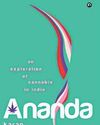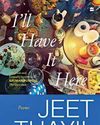The state of freedom in a digital world.

INDIA STANDS AT A UNIQUE JUNCTURE IN ITS HISTORY WITH ROUGHLY HALF ITS POPULATION BELOW THE AGE OF 25. India is poised to become the country with the highest number of people on the planet in less than five years. Like the rest of its population, India’s youth reflect the plurality of arguably the most diverse country on the globe. Despite attempts by the ruling dispensation to impose monolithic notions of “national unity”, India’s diversity remains one of its great strengths. Among the biggest challenges confronting the country’s youth are a broken education system, lack of opportunities for decent jobs and abysmal public healthcare facilities. We are projected to provide the planet close to one out of five software engineers. However, certain demographers believe we are home to the world’s most under-nourished, ill and illiterate in terms of sheer numbers; we have more mobile phones than usable toilets.
Young women and men in India understand that the flip side of diversity is the deep divisions and inequalities that exist. Divisions not only on the basis of age, gender and sexual orientation but also class, ethnicity, region, religion and—last, but not least—the most pernicious system of discrimination of them all, the caste system. Indian society was always iniquitous; it was the land of the opulent maharaja coexisting with the indigent. In recent years, however, the gap between the rich and the poor has widened and made India among the most unequal countries in the world. The youth cannot but be aware of these ugly aspects of the country they live in. But a majority of young India today realizes that they have particular advantages that the older generations did not have, the advantages that modern technology brings.
Denne historien er fra August 2018-utgaven av Reader's Digest India.
Start din 7-dagers gratis prøveperiode på Magzter GOLD for å få tilgang til tusenvis av utvalgte premiumhistorier og 9000+ magasiner og aviser.
Allerede abonnent ? Logg på
Denne historien er fra August 2018-utgaven av Reader's Digest India.
Start din 7-dagers gratis prøveperiode på Magzter GOLD for å få tilgang til tusenvis av utvalgte premiumhistorier og 9000+ magasiner og aviser.
Allerede abonnent? Logg på

ME & MY SHELF
Siddharth Kapila is a lawyer turned writer whose writing has focussed on issues surrounding Hinduism. His debut book, Tripping Down the Ganga: A Son's Exploration of Faith (Speaking Tiger) traces his seven-year-long journey along India's holiest river and his explorations into the nature of faith among believers and skeptics alike.

EMBEDDED FROM NPR
For all its flaws and shortcomings, some of which have come under the spotlight in recent years, NPR makes some of the best hardcore journalistic podcasts ever.

ANURAG MINUS VERMA PODCAST
Interview podcasts live and die not just on the strengths of the interviewer but also the range of participating guests.

WE'RE NOT KIDDING WITH MEHDI & FRIENDS
Since his exit from MSNBC, star anchor and journalist Mehdi Hasan has gone on to found Zeteo, an all-new media startup focussing on both news and analysis.

Ananda: An Exploration of Cannabis in India by Karan Madhok (Aleph)
Karan Madhok's Ananda is a lively, three-dimensional exploration of India's past and present relationship with cannabis.

I'll Have it Here: Poems by Jeet Thayil, (Fourth Estate)
For over three decades now, Jeet Thayil has been one of India's pre-eminent Englishlanguage poets.

Orbital by Samantha Harvey (Penguin Random House India)
Samantha Harvey became the latest winner of the Booker Prize last month for Orbital, a short, sharp shock of a novel about a group of astronauts aboard the International Space Station for a long-term mission.

She Defied All the Odds
When doctors told the McCoombes that spina bifida would severely limit their daughter's life, they refused to listen. So did the little girl

DO YOU DARE?
Two Danish businesswomen want us to start eating insects. It's good for the environment, but can consumers get over the yuck factor?

Searching for Santa Claus
Santa lives at the North Pole, right? Don't say that to the people of Rovaniemi in northern Finland